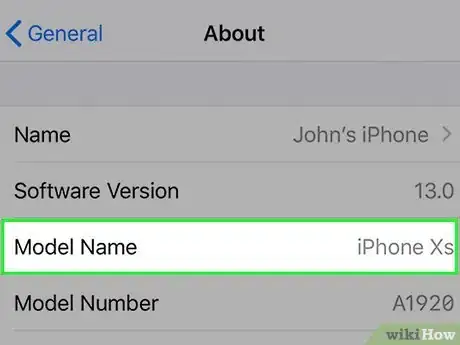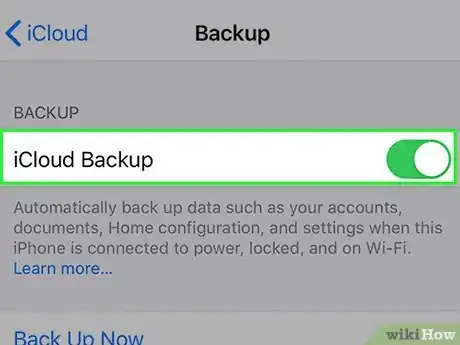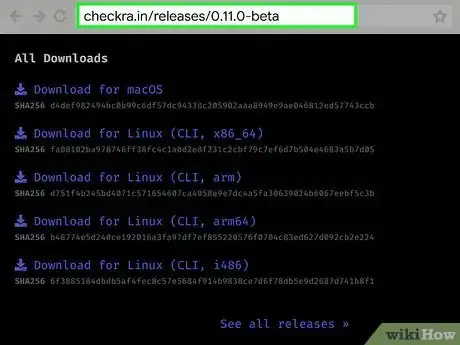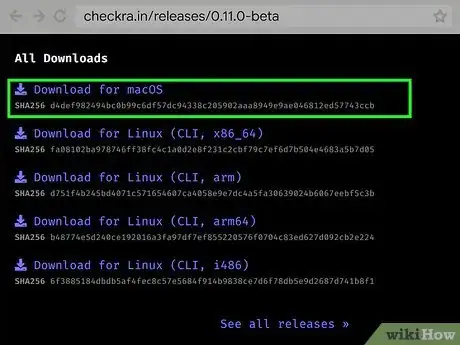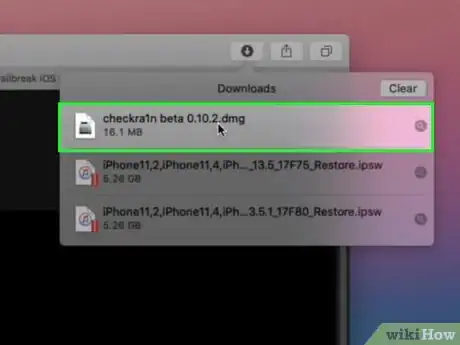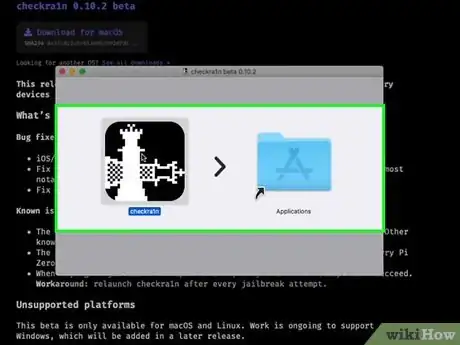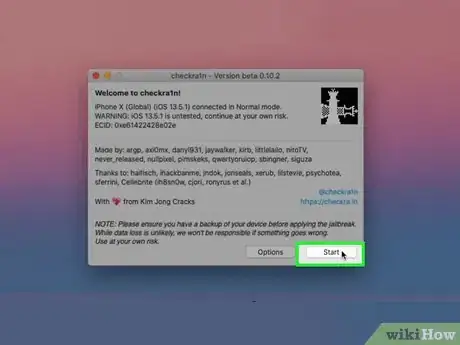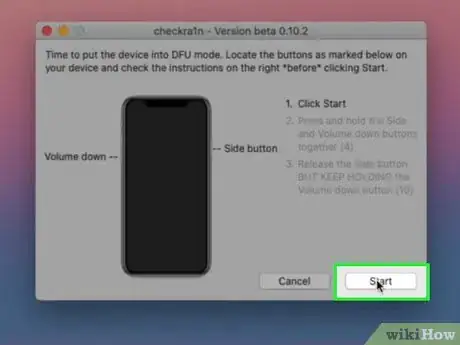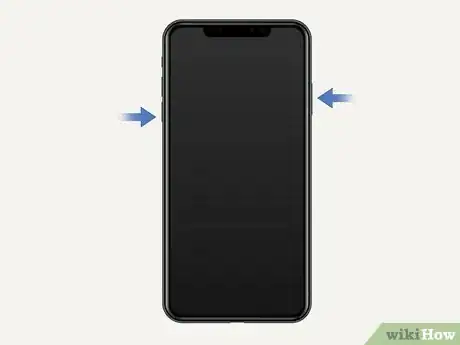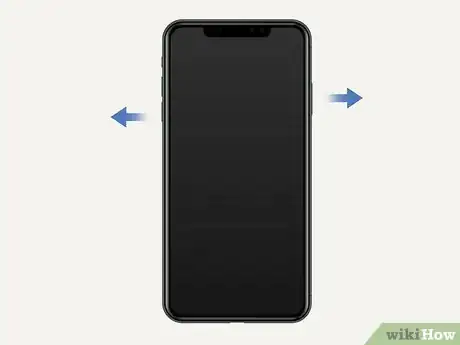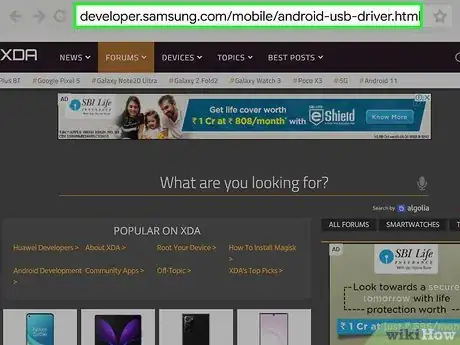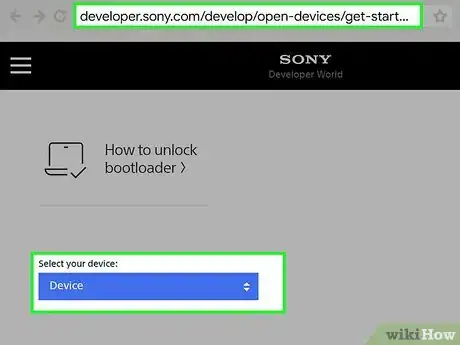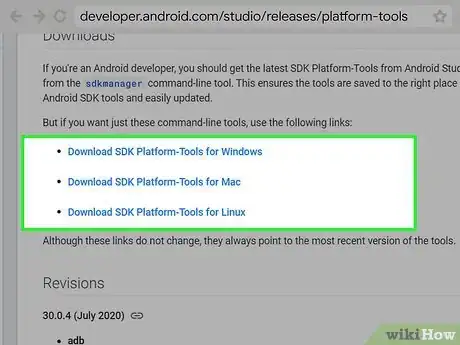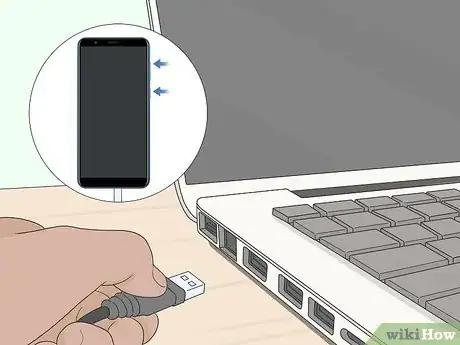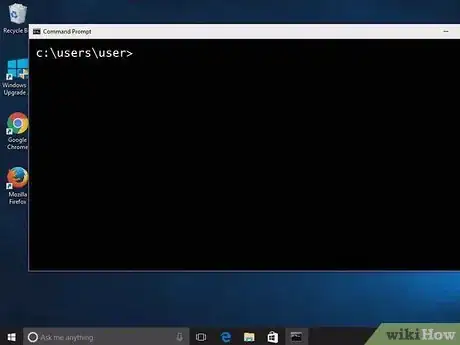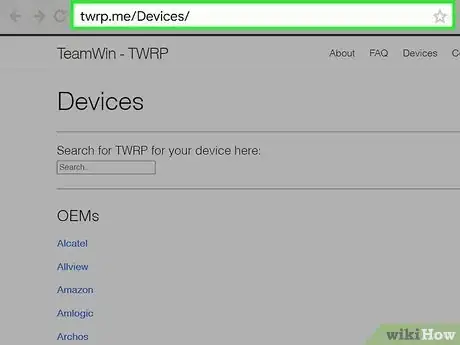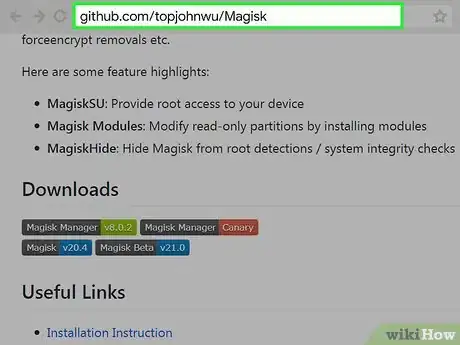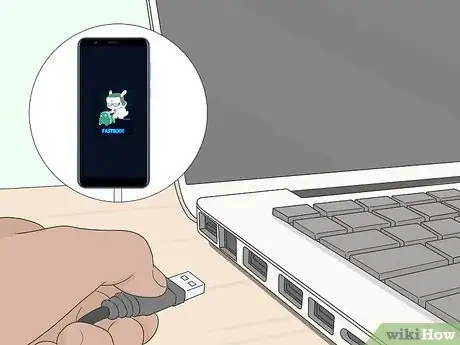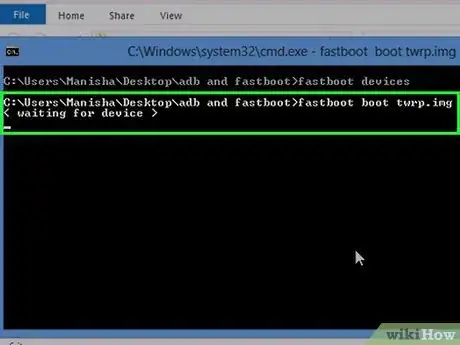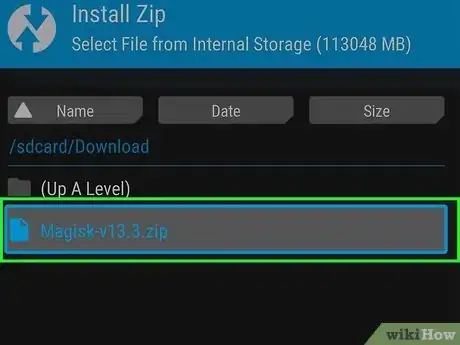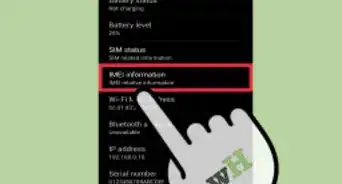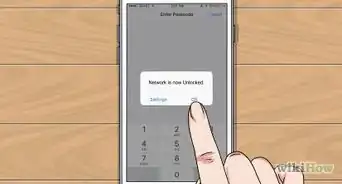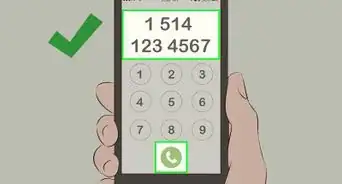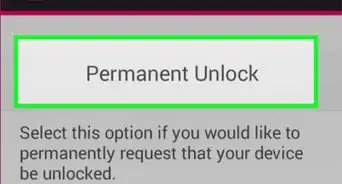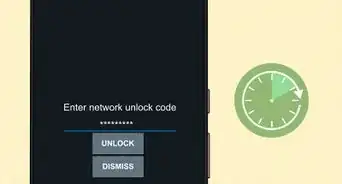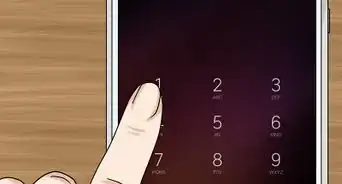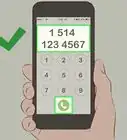This article was co-authored by wikiHow staff writer, Travis Boylls. Travis Boylls is a Technology Writer and Editor for wikiHow. Travis has experience writing technology-related articles, providing software customer service, and in graphic design. He specializes in Windows, macOS, Android, iOS, and Linux platforms. He studied graphic design at Pikes Peak Community College.
This article has been viewed 135,101 times.
Learn more...
Jailbreaking your phone allows you to customize your device, access its root file system, download apps from unofficial sources, and make other changes using the developer’s privileges. Jailbreaking is the term used for Apple iOS devices, whereas “rooting” is the term used to describe the jailbreak procedure for Android phones. This wikiHow teaches you how to jailbreak your phone.
Steps
Jailbreaking Your iPhone
-
1Check to make sure your iPhone is compatible. There are a variety of jailbreak methods for different versions of iOS. Currently, the only jailbreak for iOS 14 is Checkra1n. Checkra1n works for iOS 12 - 13 on iPhone 5 through iPhone X. For iOS 14, Checkra1n currently supports iPhone 6s, 6s Plus, and SE, with support for more iPhone models coming soon. You also need a Mac or Linux computer to install Checkra1n. Check back later for Windows support. Use the following steps to check your iPhone model and which version of iOS you are running.
- Open the Settings app.
- Tap General.
- Tap About.
- Note which version of iOS you have next to "Software version".
- Note your iPhone model next to "Model Name".
-
2Understand the risks of jailbreaking. Jailbreaking allows your iPhone to access software and tweaks that are unapproved by Apple. It also removes many security measures Apple has in place. This puts your iPhone at risk of downloading viruses and malware. Some apps may stop working on a jailbroken iPhone. In rare cases, the jailbreak process can render your iPhone inoperable. Jailbreaking is not supported by Apple and will void any warranty you still have on your iPhone. Continue at your own risk.
- Also be aware that all jailbreaks for iOS 12 and higher are semi-untethered jailbreaks. This means the jailbreak will work until you restart your iPhone. Once you restart your iPhone, you will need to use the Checkra1n app on your computer to reactivate the jailbreak.
Advertisement -
3Back up your iPhone. This will protect your data in case anything goes wrong during the jailbreak process. You can back up all the data on your iPhone to iTunes, or Finder on your Mac computer. You can also use the following steps to back up your data to iCloud:
- Open the Settings app.
- Tap your Apple ID at the top.
- Tap iCloud.
- Tap iCloud Backup.
- Tap Back Up Now.
-
4Go to https://checkra.in/releases/0.11.0-beta in a web browser. This is the website where you can download the Checkra1n jailbreak.
-
5Scroll down and click Download for MacOS. This will download the install file for Checkra1n to your Mac computer.
- If you are using a Linux computer, click the download link for whichever version of Linux you are using. Be sure to follow any installation instructions that are provided.
- For Windows users, you can use Cydia Impactor to jailbreak and install Cydia on iPhones running iOS 13 and below.
-
6Open the Installation file. You can find the installation file in your Downloads folder or inside your web browser. Double-click it to open it. Then drag the Checkra1n app to your Applications folder.
-
7Connect your iPhone to your computer. Use the lightning cable that came with your iPhone to connect it to a free USB port on your computer.
-
8Open Checkra1n. It has a black icon with an image that resembles two Chess pieces. Click the icon in your Applications folder to open Checkra1n. It should detect your iPhone model and display it at the top of the Checkra1n app.
-
9Power your iPhone On and click Start. It's in the lower-right corner of the Checkra1n app on your Mac. This will begin the jailbreak process. The Checkra1n app will walk you through the process. It will start by informing you that it will need to put your device in recovery mode. This should happen automatically, but some devices may require you to manually put your iPhone in recovery mode. If so, it will give you instructions on how to do that.
-
10Click Next. This will put your iPhone in recovery mode. You should see an image of a lightning cable on your iPhone's screen.
- If you want to attempt to jailbreak an unsupported iPhone model (i.g, an iPhone X running iOS 14), you can click Options and then check "Allow untested iOS/iPadOS/tvOS versions". Be aware that using untested models may not work properly. This means you may have an increased risk of damaging your iPhone. Use untested models at your own risk.
-
11Read the instructions and click Start. The instructions on-screen tell you how to put your iPhone in DFU (Device Firmware Update) mode. On most supported iPhone models, you will press the power button and the Home button at the same time, or the Side button and Volume Down button on iPhones that don't have a Home button.
-
12Put your device in DFU mode. Press the buttons needed to put your iPhone in DFU mode when prompted by Checkra1n on your computer.
-
13Release the Power button or Side button. When prompted by Checkra1n, release the power button or the Side button. This will put your iPhone in DFU mode. The Checkra1n jailbreak will be installed on your iPhone while it is in DFU mode. You will see the Apple logo with the Checkra1n logo over it. You will also see some text on your iPhone's screen. When your iPhone reboots, it will be jailbroken with the Checkra1n app installed.
- If you open the Checkra1n app on your iPhone, it gives you the option to install Cydia, which is the unofficial app store for jailbreak apps and tweaks.
Rooting Your Android
-
1Understand the risks of rooting your phone. Rooting your phone gives you superuser permissions over your phone. The process for rooting your phone varies quite a bit from one model to the next. It also takes away many of the security features that Google has put in place. This puts your phone at greater risk of viruses and malware. Some apps and services may stop working on a rooted phone. Many carriers do not support rooting your phone and may deny access to their network. In most cases, rooting your phone will void the warranty from your carrier or phone's manufacturer. Continue at your own risk.
- Many phone models and carriers do not allow you to unlock the bootloader. If you are unable to unlock the bootloader, you may be able to find an unofficial way to unlock your bootloader at https://forum.xda-developers.com/. If you can't find an unofficial way to unlock the bootloader on your phone, it is unlikely you will be able to root your phone.
- Unlocking the bootloader on Samsung phones will break the Knox security system. You will not be allowed to use any Samsung services such as the Galaxy Store, Samsung Pay, Samsung Cloud, etc. Additionally, the process will wipe all data from your phone.
-
2Back up everything you want to keep on your phone. The process for rooting your Android phone requires you to flash a new recovery system onto your phone. This will wipe all data on your phone. Before you begin, be sure to transfer any photos and videos you want to keep to your computer or cloud storage. You can back up your account settings, app data, and other information to your Google Cloud account using the following steps:
- Open the Settings app.
- Tap the magnifying glass icon in the upper-right corner.
- Search the Settings menu for "Backup".
- Tap the Backup & Restore option.
- Tap Backup data.
- Tap Back up.
-
3Install your phones USB drivers. You'll need the USB drivers for your Android phone to interface with your computer. Especially if you are using a Windows computer. You'll need to download the drivers from the manufacturer's web page. Use Google to search for the drivers for the make and model of your Android phone. Locate the drivers on the manufacturer's web page and download and install them. The following are some of the websites you can download the device drivers for your Android phone:
-
4Get the unlock code from your phone's manufacturer (if needed). Some phone manufacturer's, such as Sony, Motorola, HTC, and Huawei require you to get a special code to unlock the bootloader for your phone. To do get that, you will need to go to the manufacturer's bootloader unlocking page and select your phone model. Then you will need to sign in or create an account to request an unlock code. You should receive the bootloader unlock code and any special instructions through email.
- Samsung does not offer unlock codes for their products. Instead, you will need to download and install a separate program called Odin which can be used flash new firmware onto Samsung phones. Odin is available for both Windows and Mac.
-
5Download and install Android SDK. Android SDK are command-line tools that allow you interface with your device using the command prompt or terminal. Use the following steps to download Android SDK tools.
- Go to https://developer.android.com/studio/releases/platform-tools in a web browser.
- Click the download link for the operating system your computer is using.
- Open the zip file in your web browser or Downloads folder.
- Extract the "Platform-tools" folder to your desktop or another location of your choice.
-
6Enable OEM unlocking and USB debugging on your phone. In order to interface with your phone on your computer, you'll need to enable OEM unlocking and USB debugging. Not all phones have OEM unlocking. If your phone does not have OEM unlocking, you may still be able to root your phone on certain models. Other models will not allow you to root your phone. Use the following steps to enable OEM unlocking and USB debugging mode.
- Open the Settings app in your Apps menu.
- Tap About phone.
- Tap Build number 7 times to unlock Developer Options.
- Tap the back button in the upper-right corner to return to the root Settings menu.
- Tap Developer Options.
- Tap the toggle switch to enable OEM unlocking (if available) and enter your passcode.
- Tap the toggle switch to enable USB debugging and enter your passcode.
-
7Boot your phone into bootloader mode and connect it to your computer. The way you do this is going to be different depending on the make and model of your phone. First you'll need to start by completely turning off your phone. Then you'll need to press and hold a button combination to boot your phone into bootloader mode. If your phone displays a boot menu, use the Volume Up and Volume Down buttons to navigate the menu. Press the Power button to select the bootloader option. The button combination to unlock the Bootloader is as follows:
- Press and hold the Volume Up and Power button to boot into the bootloader menu on most Android phones. Release the power button and continue holding the Volume Up botton when you see your phone's logo on-screen.
- Some phone models require you to press and hold the Volume Down and Power button to boot into the bootloader menu.
- On Samsung Galaxy phones with a Bixby button, press and hold the Bixby, Volume Down, and the Power button all at the same time.
- Alternatively, you can connect your phone to your computer, open the Terminal on Mac, or open the "Platform-tools" folder, right-click any empty space and click Open Powershell window here. Type adb reboot bootloader" and press Enter. [1]
-
8Open the Terminal on Mac or "Platform-tools" folder in a CMD/Powershell window on Windows. If you are using a Mac, you only need to open the Terminal. On Windows, open the Platform-tools folder you downloaded and extracted, hold Shift and right-click any empty space. Then click Open Powershell window here
- To check if your phone is properly connected, type the command "adb devices". It should display your phone's serial number.
- To see if your bootloader is unlockable type the command "fastboot flashing get_unlock_ability". If it returns a code of "1", your phone's bootloader can be unlocked. If it returns a code of "0", your bootloader can't be unlocked and you will need to find an unofficial way to unlock your phone's bootloader.
-
9Enter the command to unlock your phone's bootloader. This is different depending on the your phone's make and model. The most common command to unlock the bootloader is "fastboot oem unlock" or "fastboot flashing unlock". Some phone models may require you to enter the unlock code in addition to the command. Follow the instructions from your phone's manufacturer to enter the correct unlock command. You may also see a confirmation prompt on your phone's screen. If so, use the volume buttons to select the option to confirm that you want to unlock your bootloader.[2] [3]
- Be aware that this will most likely void your warranty on your phone.
- Samsung users will not be able to unlock their bootloader using the Terminal or command line. Instead, launch Odin.
-
10Download TWRP for your phone. TWRP is a custom recovery program that allows you to install custom software on your phone, including the software needed to root your phone. TWRP is not available for all phone models, but it is available for most. If you can't find it on the website, try search Google or xda-developers.com. Use the following steps to download TWRP for your phone model:
- Go to https://twrp.me/Devices/ in a web browser.
- Click your phone's manufacturer name.
- Click your phone's model.
- Click the download link to download TWRP for your phone.
- Download the latest ".img" file for TWRP (Samsung users download the ".img.tar" file).
-
11Download Magisk. Magisk is the utility that you will be using to root your phone. Use the following steps to download Magisk:
- Go to https://github.com/topjohnwu/Magisk in a web browser.
- Scroll down and click the latest version of Magisk below "Downloads".
- Save the zip file to your phone's internal storage where you can find it. You can transfer files using the USB connection.
-
12Boot your phone into fastboot mode and connect it to your computer. If your phone is not already in fastboot mode and connected to your computer use the same methods as before to put it in fastboot mode and use the USB cable to connect it to your computer. Open the Terminal or Powershell window in the Platform-tools folder and type "adb devices" and press enter to make sure it is connected.
-
13Type fastboot boot and drag the TWRP image file into the window. This will give you the command to boot your phone into the TWRP custom recovery from the file on your computer. This will not install TWRP on your phone, but it will temporarily boot it into TWRP. When your phone boots TWRP, select "Keep read only" and swipe the arrows at the bottom to the right.
- Samsung users open Odin and click AP on Windows or PDA on Mac. Select the TWRP "img.tar" file and click Open. Click the Options tab and uncheck Auto Recovery. Then click Start to flash TWRP to your phone. Then you will need to reboot your phone into recovery mode to boot into TWRP. You will also need to use TWRP to wipe the data on your phone in order to remove the encryption. Additionally, you will need to download a file called No Verity from here and save it to your phone's internal storage. This file will keep your phone from getting stuck in a boot loop and unable to function.[4]
-
14Flash Magisks to your phone. Almost done. Once you flash Magisk to your phone it will reboot and then it will be rooted. Use the following steps to flash Magisk to your phone in TWRP.
- Tap Install.
- Browse to and select the Magisk zip file.
- Swipe to flash the magisk file to your phone (Samsung users also need to use this same method to install the No Verity file).
Community Q&A
-
QuestionCan I jailbreak the passcode on my phone?
 Community AnswerNo you can't because the password is heavily encrypted and you can't jailbreak it.
Community AnswerNo you can't because the password is heavily encrypted and you can't jailbreak it.
Warnings
- Keep in mind that jailbreaking will void your manufacturer’s warranty with Apple and the manufacturer of your Android device. Jailbreak or root your phone at your own risk, and know that Apple and your Android manufacturer are not responsible for data loss or software damage to your phone or computer.⧼thumbs_response⧽
